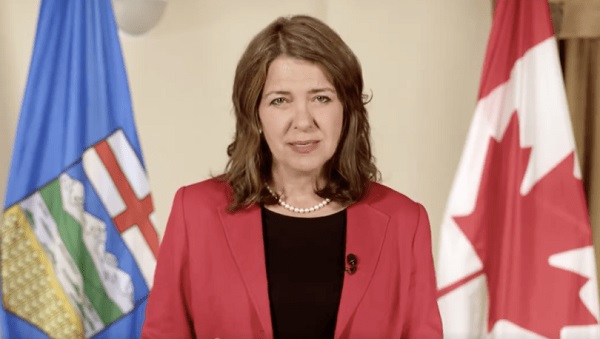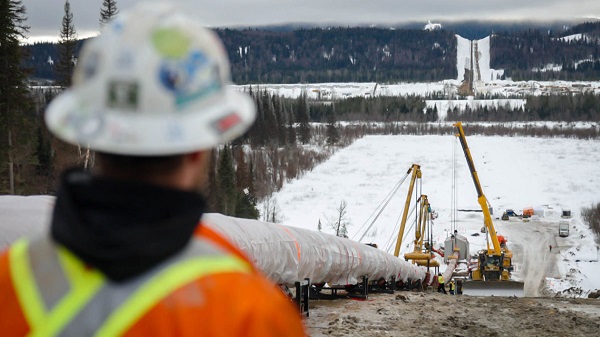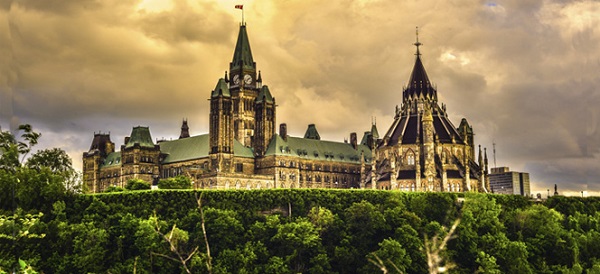Alberta
Media melts down as Danielle Smith moves to end ‘transitioning’ of children in Alberta

From LifeSiteNews
After Alberta’s Danielle Smith put forth legislation to protect kids from being gender ‘transitioned,’ the Canadian media went on a predictable melt down, citing ‘experts’ who blatantly lie to advance the LGBT agenda.
A year after announcing her intention to combat transgender ideology and protect children, Alberta Premier Danielle Smith has tabled three pieces of UCP (United Conservative Party) government legislation:
- The Education Amendment Act 2024 will require parental consent for “socially transitioning” children under the age of 16 (changing a child’s name or “preferred pronouns”). The bill also gives parents an “opt-in” option for any sexual or content at school. Smith has emphasized that the Alberta Teaching Profession Commission has the power to discipline teachers if they decide to break the law.
- The Health Statues Amendment Act 2024 will ban the use of puberty blockers and cross-sex hormones for minors, as well as prohibit sex change surgeries on minors.
- The Fairness and Safety in Sport Act will ban trans-identifying men from female sports teams.
Together, these three bills represent the most definitive pushback against gender ideology in Canada by any premier. Smith’s decision to announce her intent to pursue such legislation and then wait has turned out to be politically savvy—it has given the UCP government a good look at the LGBT response, and during that time the U.K.’s Labour government has successfully fought to maintain a similar ban in the courts and publicly rebutted many of the scare tactics used by LGBT activists.
Smith and the UCP are thus walking into this debate with eyes wide open, and are clearly certain that the public is on their side (it is) and that the legislation can survive the court challenges surely coming from LGBT activists. The policies are clearly popular with the UCP party’s base, who handed Smith a staggering 91.5% approval rating in her leadership review at UCP gathering in Red Deer last Saturday.
The party also passed 35 policy resolutions, including several that indicate the UCP’s willingness to go further in fighting transgender ideology, with resolutions that would restrict “exclusively female spaces” like bathrooms and changerooms to females and designating transgender surgeries as “elective cosmetic procedures” not funded by the taxpayer. The motions received near-unanimous support.
The Canadian press, unsurprisingly, is working hard to present policies that the vast majority of Canadians support as an attack on fundamental norms (albeit norms that only surfaced in the last few years and were never presented to voters). Global News ran the headline: “Alberta unveils 3 sweeping bills affecting trans and gender-diverse youth.” It is important to note that the press accepts the premises of transgender ideology as the starting point for their reporting, with heavy usage of nonsensical phrases like “gender-diverse youth,” which implies that there are many genders.
In fact, Global News and other Canadian outlets trotted out talking points that have been definitively rebutted by the U.K.’s Cass Review and multiple medical studies—in fact, even the New York Times has been reporting on the permanent harms of puberty blockers over the past several years. An example from Global News:
Alberta parents of gender-diverse youth like Haley Wray believe the new laws will give kids less choice — especially when it comes to health-care that is not permanent but instead, gives kids time to work through their identity struggles.
‘Hormone blockers are a very valuable tool,’ Wray said, explaining they have a very small window of effectiveness to pause, but not prevent, puberty. ‘It is reversible because nothing changes. And what that does is it allows youth and families to have that that pause, that break to explore further, validate, understand what this means and know that permanent changes aren’t happening.’
Wray believes the proposed legislation will make the province a less safe place for tens of thousands of Alberta kids who aren’t straight. It’s why, Wray says, a growing number of families with transgender children are now grappling with whether Alberta is a place they can stay. ‘I know people who have, and I know people who genuinely feel like there is likely nowhere to go,’ she said.
This is incorrect. Puberty blockers cause permanent damage, and children may be rendered permanently sterile after taking them for a relatively short period of time. Puberty is not something that can be “paused,” and it frequently causes irreversible rather than reversible damage. Smith and her government understand this, which is why they have decided to pass this legislation—not, as nearly every press outlet claimed, to “target trans youth,” but to protect them.
The CBC chimed in with sentences like this one:
Terms like ‘biological female’ and ‘biological male’ can be used to imply that transgender people are still their assigned sex at birth, despite their identity.
To translate: a scientifically accurate and precise statement is now an ideological one, but inherently ideological language invented by the transgender movement over the past decade is, in fact, technically accurate. People can identify as anything they want; it is irrelevant to their biology. The CBC presents pointing this out as some sort of propagandistic attack on vulnerable people.
Fortunately, Smith appears to know what she’s doing here. She’s taken her time to ensure that the legislation she has put forward will pass, and that it is defensible in court. Saskatchewan Premier Scott Moe, who has just led the Saskatchewan Party to its fifth straight majority government, is of a similar mind—he’s promised to put forward legislation protecting female spaces as a matter of first priority. It took long enough, but Canada’s conservatives are finally starting to move.
Alberta
Owner sells gas for 80 cents per litre to show Albertans how low prices ‘could’ be

Undoubtedly some of the motorists driving past The Whistle Stop Cafe at Mirror on Tuesday morning thought it was an April Fools prank. It wasn’t.
Chris Scott, owner of the gas station at The Whistle Stop Cafe offered a one day promotion on April 1st. Scott sold 8000 litres of regular gasoline for $0.80/ litre.
The promotion was funded by Scott and the Alberta Prosperity Project. In this video posted to his social media, Chris Scott explains why they did it.
Alberta
The beauty of economic corridors: Inside Alberta’s work to link products with new markets

From the Canadian Energy Centre
Q&A with Devin Dreeshen, Minister of Transport and Economic Corridors
CEC: How have recent developments impacted Alberta’s ability to expand trade routes and access new markets for energy and natural resources?
Dreeshen: With the U.S. trade dispute going on right now, it’s great to see that other provinces and the federal government are taking an interest in our east, west and northern trade routes, something that we in Alberta have been advocating for a long time.
We signed agreements with Saskatchewan and Manitoba to have an economic corridor to stretch across the prairies, as well as a recent agreement with the Northwest Territories to go north. With the leadership of Premier Danielle Smith, she’s been working on a BC, prairie and three northern territories economic corridor agreement with pretty much the entire western and northern block of Canada.
There has been a tremendous amount of work trying to get Alberta products to market and to make sure we can build big projects in Canada again.
CEC: Which infrastructure projects, whether pipeline, rail or port expansions, do you see as the most viable for improving Alberta’s global market access?
Dreeshen: We look at everything. Obviously, pipelines are the safest way to transport oil and gas, but also rail is part of the mix of getting over four million barrels per day to markets around the world.
The beauty of economic corridors is that it’s a swath of land that can have any type of utility in it, whether it be a roadway, railway, pipeline or a utility line. When you have all the environmental permits that are approved in a timely manner, and you have that designated swath of land, it politically de-risks any type of project.
CEC: A key focus of your ministry has been expanding trade corridors, including an agreement with Saskatchewan and Manitoba to explore access to Hudson’s Bay. Is there any interest from industry in developing this corridor further?
Dreeshen: There’s been lots of talk [about] Hudson Bay, a trade corridor with rail and port access. We’ve seen some improvements to go to Churchill, but also an interest in the Nelson River.
We’re starting to see more confidence in the private sector and industry wanting to build these projects. It’s great that governments can get together and work on a common goal to build things here in Canada.
CEC: What is your vision for Alberta’s future as a leader in global trade, and how do economic corridors fit into that strategy?
Dreeshen: Premier Smith has talked about C-69 being repealed by the federal government [and] the reversal of the West Coast tanker ban, which targets Alberta energy going west out of the Pacific.
There’s a lot of work that needs to be done on the federal side. Alberta has been doing a lot of the heavy lifting when it comes to economic corridors.
We’ve asked the federal government if they could develop an economic corridor agency. We want to make sure that the federal government can come to the table, work with provinces [and] work with First Nations across this country to make sure that we can see these projects being built again here in Canada.
-

 2025 Federal Election2 days ago
2025 Federal Election2 days agoJoe Tay Says He Contacted RCMP for Protection, Demands Carney Fire MP Over “Bounty” Remark
-

 2025 Federal Election2 days ago
2025 Federal Election2 days agoHong Kong-Canadian Groups Demand PM Carney Drop Liberal Candidate Over “Bounty” Remark Supporting CCP Repression
-

 2025 Federal Election2 days ago
2025 Federal Election2 days agoPoilievre To Create ‘Canada First’ National Energy Corridor
-

 2025 Federal Election2 days ago
2025 Federal Election2 days agoAlcohol tax and MP pay hike tomorrow (April 1)
-

 2025 Federal Election2 days ago
2025 Federal Election2 days agoChina Election Interference – Parties Received Security Briefing Days Ago as SITE Monitors Threats to Conservative Candidate Joe Tay
-

 2025 Federal Election2 days ago
2025 Federal Election2 days agoFixing Canada’s immigration system should be next government’s top priority
-

 2025 Federal Election1 day ago
2025 Federal Election1 day agoPoilievre, Conservatives receive election endorsement from large Canadian trade union
-

 Bruce Dowbiggin2 days ago
Bruce Dowbiggin2 days agoAre the Jays Signing Or Declining? Only Vladdy & Bo Know For Sure







